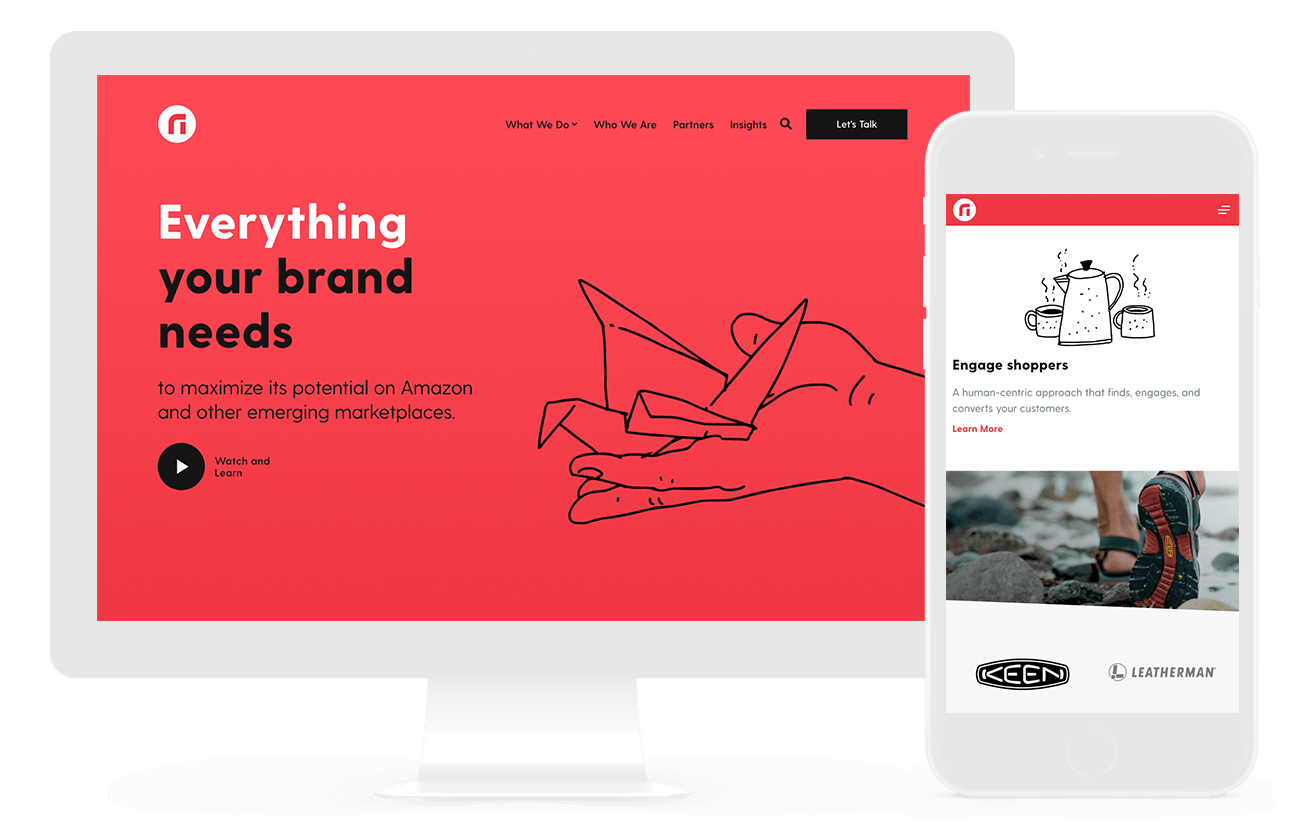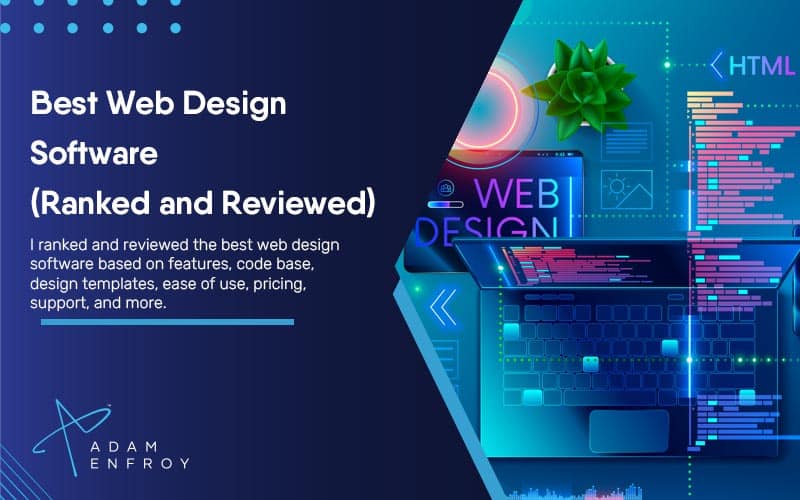All Categories
Featured
Table of Contents
- – 34 Of The Best Website Designs To Inspire You ...
- – Web Design Ledger: Homepage Tips and Tricks:
- – Html Responsive Web Design - W3schools Tips a...
- – Ciw Web Design Series Tips and Tricks:
- – Web Design Tools & Software - Webflow Tips an...
- – Web Design - Wikipedia Tips and Tricks:
- – Web Developers And Digital Designers - Burea...
- – Web Design - Wikipedia Tips and Tricks:
- – Wicky Design: Philadelphia Web Design Tips a...
- – Web Design Studio & Digital Marketing Agency...
- – The Top 10 Most Important Elements Of A Webs...
34 Of The Best Website Designs To Inspire You In 2022 Tips and Tricks:
Quick summary Use and the utility, not the visual style, identify the success or failure of a website. Since the visitor of the page is the only person who clicks the mouse and therefore decides everything, user-centric style has established as a basic approach for successful and profit-oriented web style - web design frederick md.
and the utility, not the visual style, identify the success or failure of a website. Because the visitor of the page is the only individual who clicks the mouse and for that reason chooses whatever, user-centric design has become a basic method for successful and profit-oriented website design. If users can't utilize a function, it may as well not exist.
g. where the search box must be positioned) as it has actually currently been carried out in a number of posts; instead we focus on the techniques which, utilized effectively, can lead to more advanced style decisions and simplify the process of perceiving presented details. Please notice that you may be thinking about the usability-related posts we've published prior to: Principles Of Excellent Website Style And Efficient Web Design Standards, In order to utilize the principles effectively we initially require to understand how users connect with websites, how they think and what are the standard patterns of users' behavior.
Web Design Ledger: Homepage Tips and Tricks:
Visitors glimpse at each new page, scan a few of the text, and click on the very first link that catches their interest or vaguely resembles the important things they're looking for. In truth, there are big parts of the page they do not even take a look at. Many users search for something fascinating (or beneficial) and clickable; as soon as some promising candidates are found, users click.
If a page supplies users with high-quality content, they want to jeopardize the material with ads and the style of the website. This is the reason not-that-well-designed websites with premium content acquire a lot of traffic over years. Material is more crucial than the style which supports it.

Users do not check out, they scan. Notice how "hot" areas abrupt in the middle of sentences. This is normal for the scanning process. Very easy concept: If a website isn't able to meet users' expectations, then designer stopped working to get his job done effectively and the business loses money. The higher is the cognitive load and the less user-friendly is the navigation, the more prepared are users to leave the site and look for alternatives.
Html Responsive Web Design - W3schools Tips and Tricks:
Neither do they scan website in a linear style, going sequentially from one site section to another one. Instead users satisfice; they select the first affordable option. As quickly as they discover a link that looks like it may lead to the objective, there is a great chance that it will be immediately clicked.
It doesn't matter to us if we comprehend how things work, as long as we can use them. If your audience is going to imitate you're creating signboard, then design terrific signboards." Users wish to have the ability to control their web browser and count on the consistent information presentation throughout the site.
If the navigation and site architecture aren't intuitive, the variety of enigma grows and makes it harder for users to understand how the system works and how to obtain from point A to point B. A clear structure, moderate visual hints and quickly identifiable links can assist users to discover their path to their goal.
Ciw Web Design Series Tips and Tricks:

Because users tend to check out websites according to the "F"-pattern, these three statements would be the first aspects users will see on the page once it is filled. The style itself is basic and instinctive, to understand what the page is about the user needs to browse for the response.
Once you have actually attained this, you can interact why the system is helpful and how users can benefit from it. Don't Waste Users' Patience, In every task when you are going to offer your visitors some service or tool, attempt to keep your user requirements minimal.
First-time visitors want to, not filling long web forms for an account they may never ever use in the future. Let users explore the website and find your services without forcing them into sharing private information. It's not reasonable to force users to enter an email address to evaluate the function.
Web Design Tools & Software - Webflow Tips and Tricks:
And that's what you want your users to feel on your web website. The registration can be done in less than 30 seconds as the kind has horizontal orientation, the user does not even require to scroll the page.
A user registration alone is enough of an impediment to user navigation to cut down on incoming traffic. Manage To Focus Users' Attention, As sites provide both fixed and dynamic content, some elements of the user interface draw in attention more than others do.
Focusing users' attention to specific areas of the site with a moderate usage of visual components can help your visitors to get from point A to point B without thinking of how it really is supposed to be done. The less question marks visitors have, the they have and the more trust they can develop towards the company the website represents.
Web Design - Wikipedia Tips and Tricks:
4. Strive For Function Exposure, Modern web designs are generally criticized due to their approach of directing users with visually appealing 1-2-3-done-steps, large buttons with visual impacts and so on. From the design point of view these elements in fact aren't a bad thing. On the contrary, such as they lead the visitors through the site material in a very simple and user-friendly method.
The site has 9 main navigation alternatives which are noticeable at the very first glance. The choice of colors may be too light, though. is an essential concept of successful interface design. It doesn't truly matter how this is achieved. What matters is that the content is well-understood and visitors feel comfy with the way they engage with the system.
com gets directly to the point. No charming words, no overemphasized statements. Rather a price: simply what visitors are looking for. An optimal option for efficient writing is touse short and succinct phrases (come to the point as rapidly as possible), use scannable design (categorize the material, utilize multiple heading levels, utilize visual components and bulleted lists which break the flow of consistent text blocks), usage plain and unbiased language (a promo does not need to sound like advertisement; provide your users some sensible and unbiased reason that they ought to utilize your service or remain on your website)6.
Web Developers And Digital Designers - Bureau Of Labor ... Tips and Tricks:
Users are hardly ever on a website to take pleasure in the design; moreover, in many cases they are searching for the info despite the design - web design frederick md. Pursue simpleness rather of complexity. From the visitors' point of view, the finest website style is a pure text, without any ads or additional content blocks matching exactly the query visitors used or the material they have actually been searching for.
Finch clearly provides the info about the site and gives visitors a choice of alternatives without overcrowding them with unnecessary content. 7. Do not Hesitate Of The White Space, Really it's truly hard to overestimate the value of white area. Not just does it help to for the visitors, however it makes it possible to perceive the information presented on the screen.
Complex structures are more difficult to read, scan, examine and deal with. If you have the option in between separating 2 design segments by a visible line or by some whitespace, it's typically better to use the whitespace service. (Simon's Law): the better you handle to supply users with a sense of visual hierarchy, the easier your material will be to perceive.
Web Design - Wikipedia Tips and Tricks:
The same conventions and guidelines should be used to all elements.: do the most with the least amount of cues and visual aspects. Four significant indicate be considered: simplicity, clarity, diversity, and emphasis. Simpleness includes just the aspects that are most important for communication. Clearness: all components should be created so their significance is not unclear.
Conventions Are Our Friends, Standard style of website elements does not lead to a boring website. In truth, as they decrease the learning curve, the requirement to find out how things work. For instance, it would be a functionality problem if all websites had various visual presentation of RSS-feeds. That's not that different from our regular life where we tend to get used to basic principles of how we arrange information (folders) or do shopping (placement of products).
comprehend what they're getting out of a website navigation, text structure, search positioning etc. A common example from usability sessions is to equate the page in Japanese (assuming your web users do not know Japanese, e. g. with Babelfish) and offer your use testers with a task to discover something in the page of various language.
Wicky Design: Philadelphia Web Design Tips and Tricks:
Test Early, Test Typically, This so-called TETO-principle should be used to every web style job as use tests typically provide into significant problems and problems related to an offered design. Test not too late, not too little and not for the incorrect factors.
Some crucial points to remember: according to Steve Krug, and testing one user early in the task is better than testing 50 near completion. Accoring to Boehm's first law, mistakes are most frequent throughout requirements and design activities and are the more expensive the later on they are removed.
That means that you design something, test it, fix it and then test it again. There may be issues which have not been found throughout the first round as users were practically obstructed by other issues.
Web Design Studio & Digital Marketing Agency • Gravitate Tips and Tricks:

This holds for designers too. After you have actually worked on a site for few weeks, you can't observe it from a fresh perspective any longer. You know how it is developed and for that reason you know precisely how it works you have the knowledge independent testers and visitors of your website would not have.
It can be connected to other locations such as graphic style, user experience, and multimedia arts, but is more appropriately seen from a technological standpoint. It has actually become a big part of individuals's daily lives. It is tough to think of the Internet without animated graphics, different styles of typography, background, videos and music.

Throughout 1991 to 1993 the World Wide Web was born. Text-only pages might be seen using a basic line-mode web browser. There had been no integrated method to graphic design components such as images or noises.
The Top 10 Most Important Elements Of A Website Design Tips and Tricks:
The W3C was produced in October 1994 to "lead the Web to its complete capacity by establishing common protocols that promote its evolution and ensure its interoperability." This prevented any one company from monopolizing a propriety browser and programs language, which could have changed the effect of the World Wide Web as a whole.
As this has taken place the technology of the web has actually also proceeded. There have actually also been substantial changes in the way individuals utilize and access the web, and this has altered how sites are developed. Considering that completion of the browsers wars [] new browsers have actually been launched. A lot of these are open source implying that they tend to have quicker development and are more helpful of brand-new requirements.
Learn more about Lovell Media Group LLC or TrainACETable of Contents
- – 34 Of The Best Website Designs To Inspire You ...
- – Web Design Ledger: Homepage Tips and Tricks:
- – Html Responsive Web Design - W3schools Tips a...
- – Ciw Web Design Series Tips and Tricks:
- – Web Design Tools & Software - Webflow Tips an...
- – Web Design - Wikipedia Tips and Tricks:
- – Web Developers And Digital Designers - Burea...
- – Web Design - Wikipedia Tips and Tricks:
- – Wicky Design: Philadelphia Web Design Tips a...
- – Web Design Studio & Digital Marketing Agency...
- – The Top 10 Most Important Elements Of A Webs...
Latest Posts
Web Design And Development Services Frederick MD
Learn Web Design With Online Courses, Classes, & Lessons Tips and Tricks:
Web Design - Website Design Tutorials, Articles And Free Stuff Tips and Tricks:
More
Latest Posts
Web Design And Development Services Frederick MD
Learn Web Design With Online Courses, Classes, & Lessons Tips and Tricks:
Web Design - Website Design Tutorials, Articles And Free Stuff Tips and Tricks: